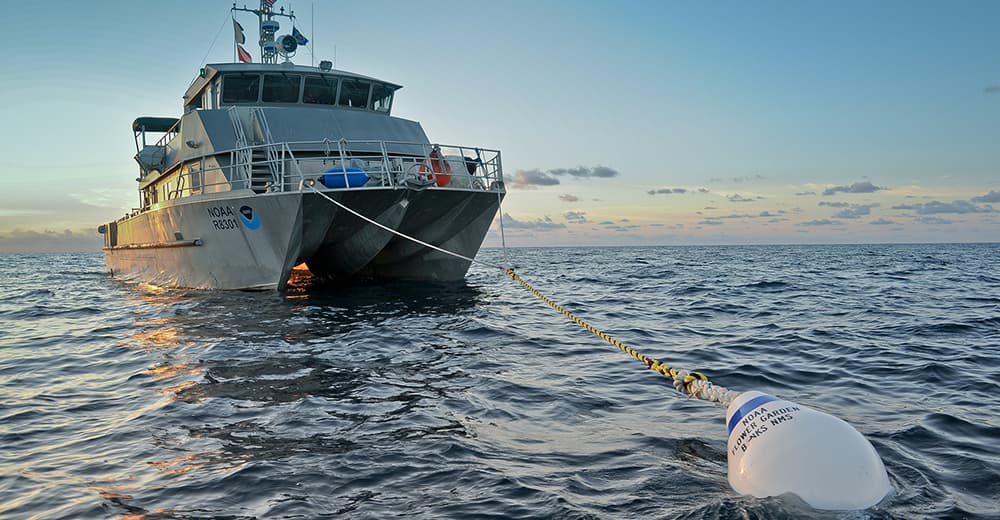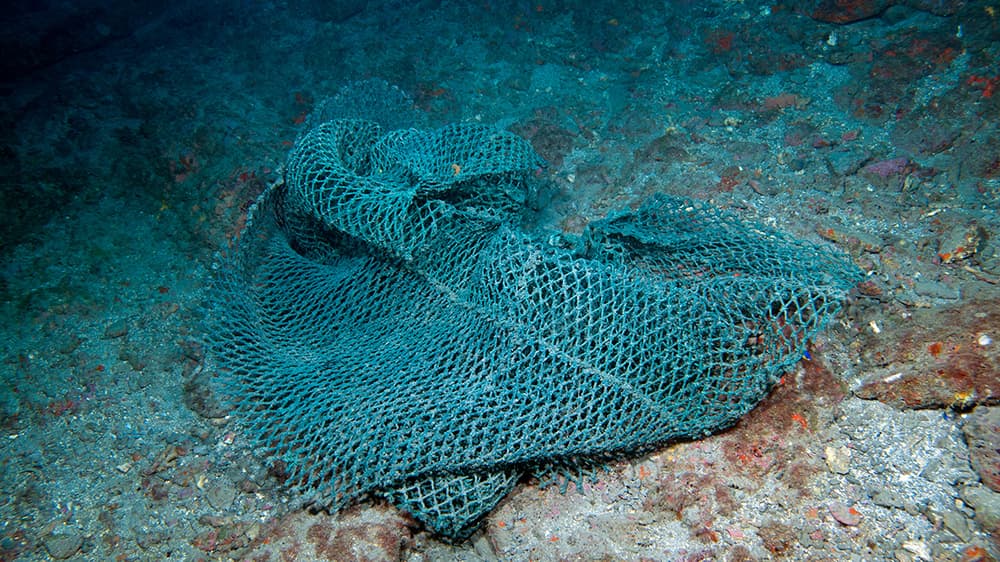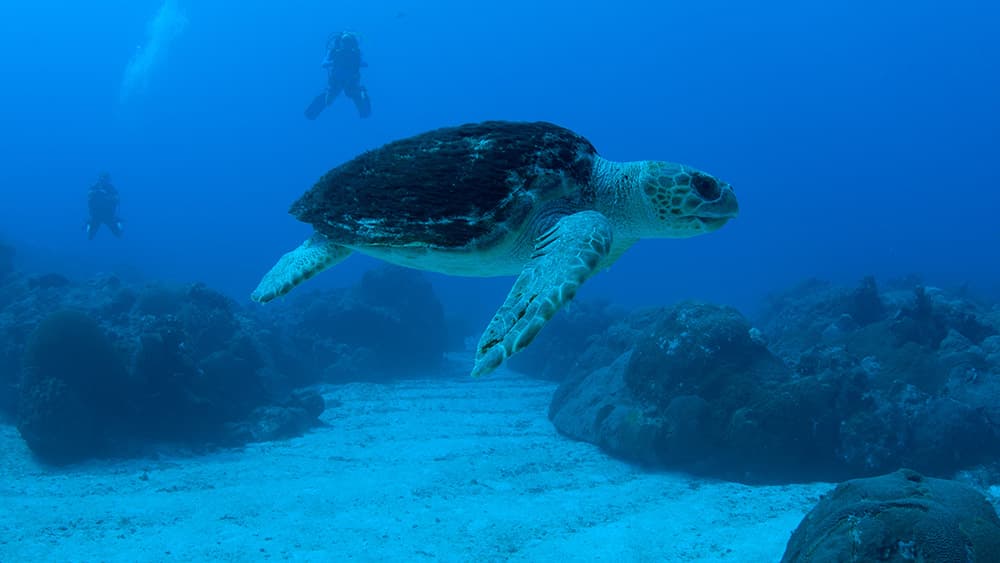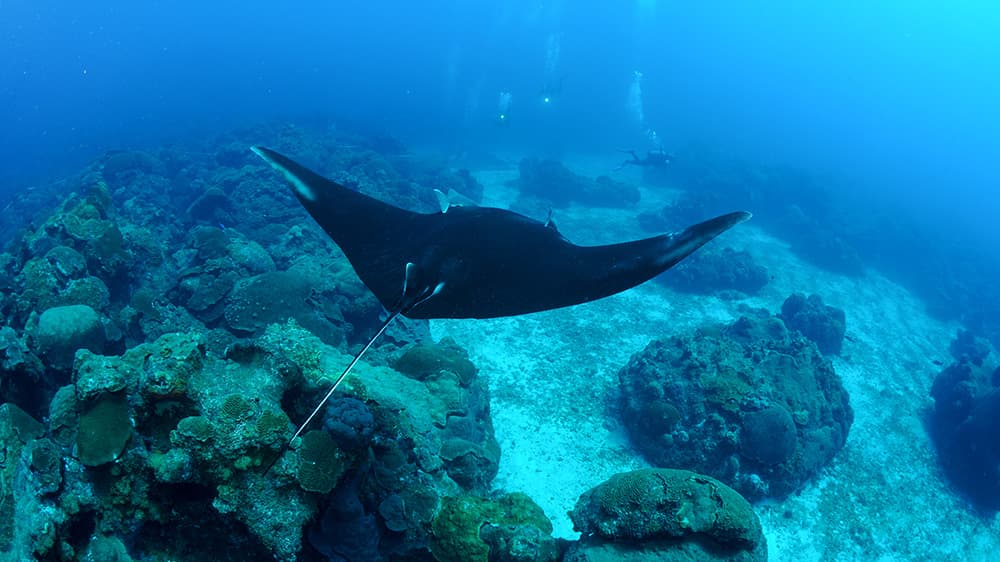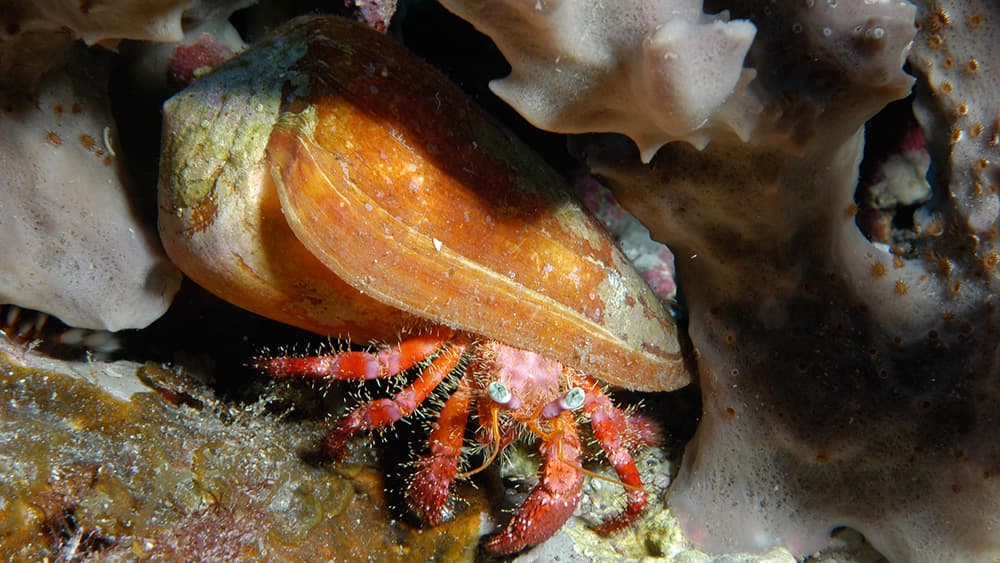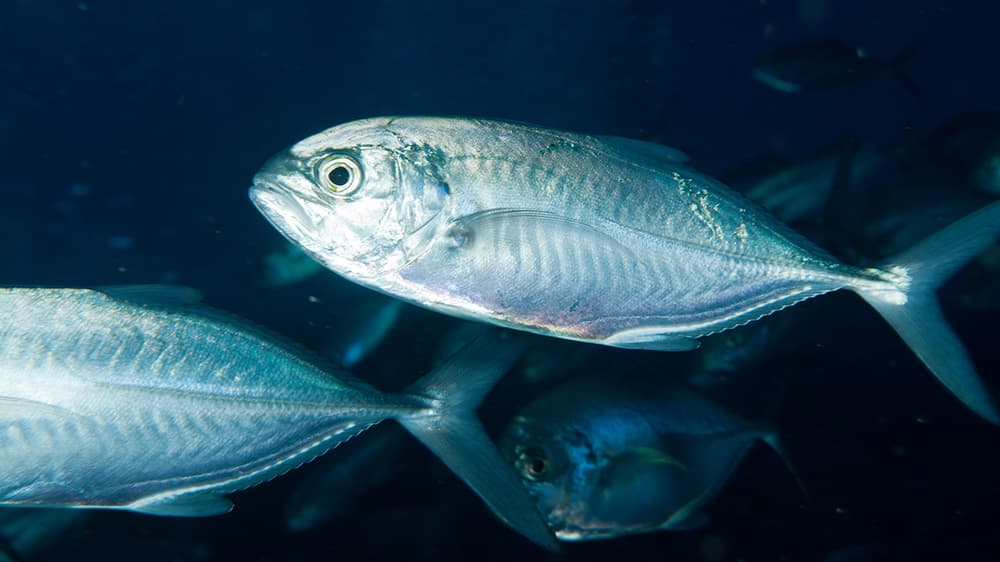Regulations
This is a summary of prohibited or otherwise regulated activities within all areas of Flower Garden Banks National Marine Sanctuary. These regulations apply within sanctuary boundaries at the following banks: Alderdice, Bouma, Bright, East Flower Garden, Elvers, Geyer, Horseshoe, MacNeil, McGrail, Parker, Rankin/28 Fathom, Rezak, Sidner, Sonnier, Stetson, and West Flower Garden.
For a comprehensive listing of sanctuary regulations, please see 15 CFR Part 922 Subpart L.
Anchoring and Mooring
The following activities are prohibited:
- Anchoring any vessel within the sanctuary
- Mooring a vessel over 100 feet in registered length on a sanctuary mooring buoy

Diver Safety
All moored vessels engaged in diving activities at FGBNMS must clearly exhibit the blue and white International Code flag "A" ("alpha" dive flag) or the red and white "sports diver" flag when divers are in the water, and remove it once all divers exit the water.
This is consistent with U.S. Coast Guard guidelines for the Gulf.
Discharges
Sanctuary regulations prohibit discharging or depositing any material into or from within the sanctuary, with the following exceptions:
- Fish, fish parts, chumming materials or bait while fishing with conventional hook and line gear within the sanctuary
- Clean water incidental to vessel operations and clean effluent from an operable Type I or II marine sanitation device (MSD)
- Clean water generated by routine vessel operations (e.g. cooling water, deck wash down, and bilge water) excluding oily wastes from bilge pumping
- Engine exhaust
In addition, it is required that vessel operators lock all MSDs in a manner that prevents discharge or deposit of untreated sewage.
"Clean" means not containing detectable levels of harmful matter; and "harmful matter" means any substance, or combination of substances, that because of quantity, concentration, or physical, chemical, or infectious characteristics may pose a present or potential threat to sanctuary resources or qualities, including but not limited to: fishing nets, fishing line, hooks, fuel, oil, and those contaminants (regardless of quantity) listed at 40 CFR 302.4 (§ 922.131).
Marine Mammals and Sea Turtles
Regulations prohibit taking any marine mammal or turtle within the sanctuary.
"Take or taking" includes, but is not limited to, to harass (e.g. to touch, ride, or shine bright lights into an animal's eyes), harm, pursue, hunt, shoot, wound, kill, trap, capture, collect or injure, or to attempt to engage in any such conduct. This includes, but is not limited to, the collection of any dead or injured marine mammal, sea turtle or seabird, or any part thereof, no matter how temporarily; to operate a vessel or aircraft or to do any other act that results in the disturbance or molestation of any marine mammal, sea turtle, or seabird.
Rays and Whale Sharks
Regulations prohibit killing, injuring, attracting, touching, or disturbing rays or whale sharks, except for incidental catch by conventional hook and line gear.
"Attract or attracting" means the conduct of any activity that lures or may lure any animal in the sanctuary by using food, bait, chum, dyes, decoys (e.g. surfboards or body boards used as decoys), acoustics, or any other means. "Disturb or disturbing" a ray or whale shark means to, or attempt to, touch, handle, ride, pursue, chase away, hunt, restrain, detain (no matter how temporarily), capture, collect, or conduct any other activity that disrupts or has potential to disrupt any ray or whale shark in the sanctuary by any means. Notwithstanding the above, the mere presence of human beings (e.g. swimmers, divers, boaters, kayakers, surfers) is exempted from this definition.
Injury to or Possession of Sanctuary Resources
The following activities are generally prohibited:
- Injuring or removing, or attempting to injure or remove, any coral or other bottom formation, coralline algae, or other plant, marine invertebrate (e.g., spiny lobster, queen conch, shell, sea urchin), brine-seep biota, or carbonate rock within the sanctuary.
- Possessing within the sanctuary (regardless of where collected, caught, harvested, or removed), any carbonate rock, coral, or other bottom formation, coralline algae, or other plant, or fish (except for fish caught by use of conventional hook and line gear).
- Drilling into, dredging, or otherwise altering the seabed of the sanctuary; or constructing, placing or abandoning any structure, material, or other matter on the seabed of the sanctuary.
"Injure" means to change adversely, either in the short or long term, a chemical, biological or physical attribute of, or the viability of. This includes, but is not limited to, to cause the loss of or destroy.
Fishing and Related Activities
The following activities are generally prohibited:
- Injuring, catching, harvesting, collecting, or feeding, or attempting to injure, catch, harvest, collect, or feed, any fish within the sanctuary by use of any gear, device, equipment, or means (e.g. spear guns, nets) except by use of conventional hook and line gear.
- Possessing (except while passing through the sanctuary without interruption) any fishing gear, device, equipment, or means except conventional hook and line gear.
- Possessing, or using explosives, or releasing electrical charges within the sanctuary.
"Conventional hook and line gear" means any fishing apparatus operated aboard a vessel and composed of a single line terminated by a combination of sinkers and hooks or lures and spooled upon a reel that may be hand or electrically operated, hand-held or mounted.
Regulatory Documents
National Marine Sanctuary System Regulations - 15 CFR Part 922; regulations specific to Flower Garden Banks National Marine Sanctuary are in Subpart L.
FGBNMS Regulations - CFR Part 922 Subpart L; regulations specific only to Flower Garden Banks National Marine Sanctuary
* CFR = Code of Federal Regulations


